Bombardier
Bombardier Aerospace (French: Bombardier Aéronautique) is a division of Bombardier Inc., which is a Canadian multinational aerospace and transportation company.
Bombardier was founded by Joseph-Armand Bombardier as L'Auto-Neige Bombardier Limitée on January 29, 1942, at Valcourt in the Eastern Townships, Quebec. Starting as a maker of snowmobiles, over the years it has grown into a large manufacturer of regional airliners, business jets, mass transportation equipment, recreational equipment and a provider of financial services. In 1967 the company was renamed Bombardier Limited.
After acquiring Canadair in 1986 and restoring it to profitability, Bombardier acquired the near-bankrupt Short Brothers aircraft manufacturing company in Belfast, Northern Ireland in 1989. Followed by the acquisition of the bankrupt US company Learjet, a manufacturer of business jets headquartered in Wichita, Kansas in 1990. And finally the money-losing Boeing subsidiary, de Havilland Aircraft of Canada based in Toronto, Ontario in 1992.
In October 2017, Airbus and Bombardier announced a partnership on the CSeries program, with Airbus acquiring a 50.01% majority stake, Bombardier keeping 31% and Investissement Québec 19%, with a second assembly line to open in Mobile, Alabama, USA.
de Havilland Canada: Dash-8
Challenger: 300 | 350 |
600 | 601 |
604 | 605 |
650 | 850
Global: Express |
5000 | 6000
Learjet: 40 |
45 | 60 |
75
Canadair: CRJ | CRJ100 |
CRJ200 | CRJ700 |
CRJ900 |
CRJ1000
Bombardier: CSeries |
CS100 | CS300
Bombardier Dash-8
The DHC-8 Dash 8 is a series of turboprop-powered regional airliners, introduced by de Havilland Canada (DHC) in 1984. DHC was later bought by Boeing in 1988, then by Bombardier in 1992; the program is to be resold to Viking Air parent Longview Aviation Capital by late 2019.
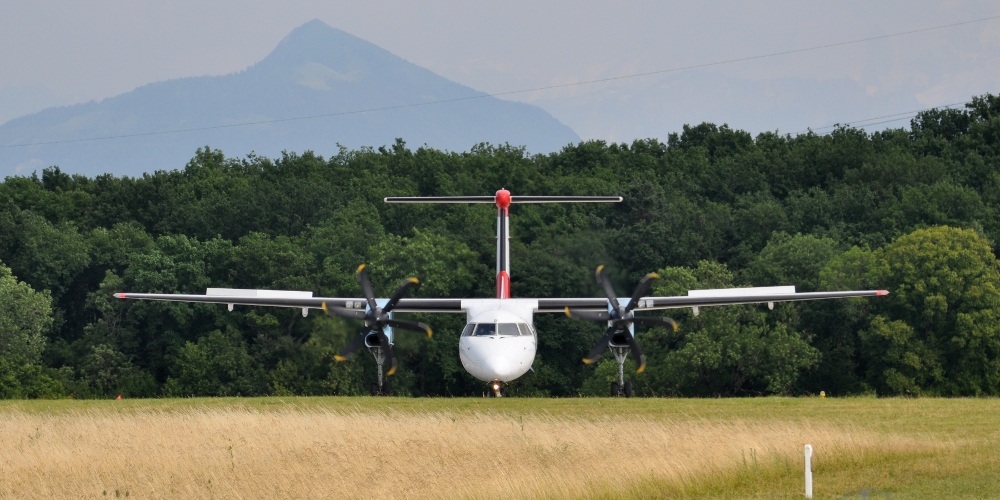

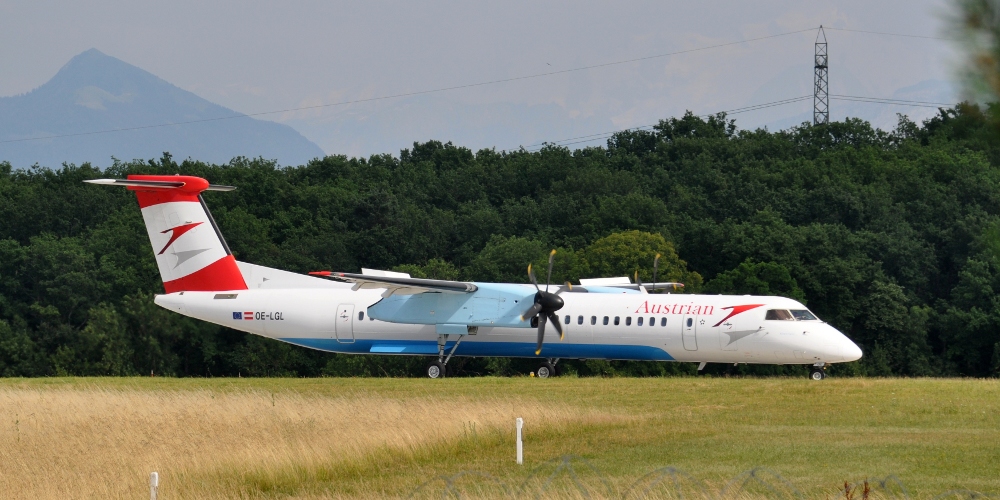
Bombardier Dash 8 (DHC-8-402Q), registration OE-LGL, built 2010, serial number 4310
Cointrin (GVA), Geneva, Switzerland, 4 July 2015
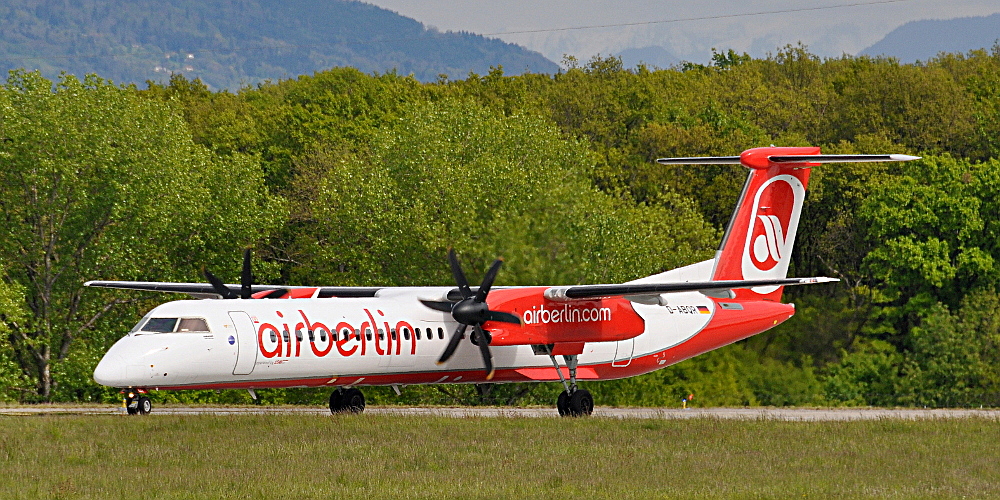
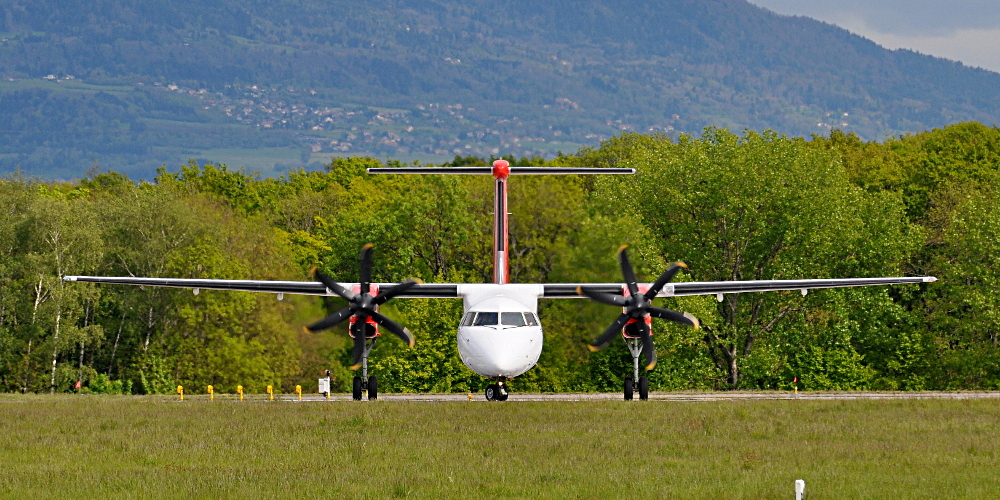

Bombardier (De Havilland Canada) Dash 8 (DHC-8-402Q), registration OE-LGL, built 2016, serial number 4538
Cointrin (GVA), Geneva, Switzerland, 3 May 2015
de Havilland Canada: Dash-8
Challenger: 300 | 350 |
600 | 601 |
604 | 605 |
650 | 850
Global: Express |
5000 | 6000
Learjet: 40 |
45 | 60 |
75
Canadair: CRJ | CRJ100 |
CRJ200 | CRJ700 |
CRJ900 |
CRJ1000
Bombardier: CSeries |
CS100 | CS300
Bombardier Challenger 300
The Bombardier BD-100 Challenger 300 is a super-mid-sized jet capable of traversing transcontinental distances. The project was launched at the Paris Air Show on July 13, 1999, at which time it was called the Bombardier Continental. It was a "clean sheet" design, assembled in Bombardier's Learjet plant at Wichita Mid-Continent airport, Kansas. The jet was renamed in September 2002 after much debate about which category (Learjet, Challenger, or Global) the new aircraft fit into. It entered commercial service in January 2004.
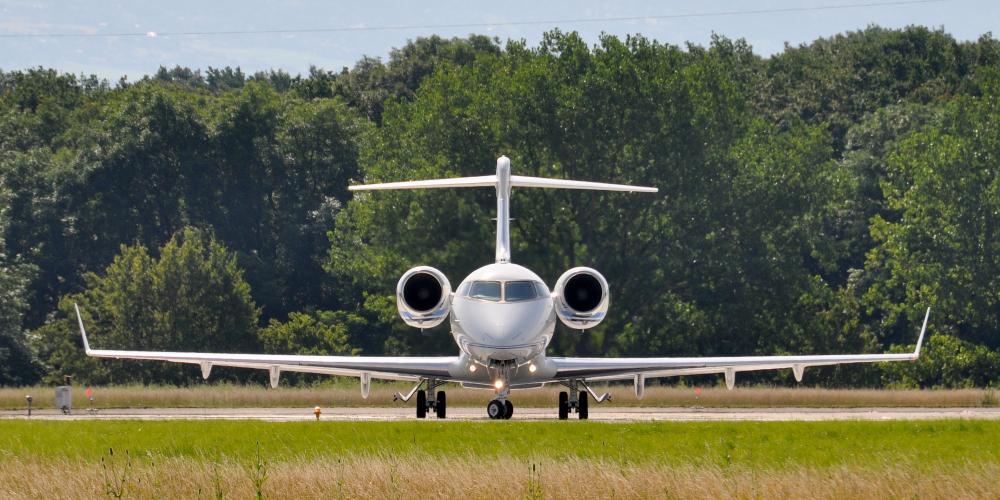

Bombardier Challenger 300 (BD-100-1A10), registration TC-ARB, built 2007, serial number 20181
Cointrin (GVA), Geneva, Switzerland, 8 July 2016
de Havilland Canada: Dash-8
Challenger: 300 | 350 |
600 | 601 |
604 | 605 |
650 | 850
Global: Express |
5000 | 6000
Learjet: 40 |
45 | 60 |
75
Canadair: CRJ | CRJ100 |
CRJ200 | CRJ700 |
CRJ900 |
CRJ1000
Bombardier: CSeries |
CS100 | CS300
Bombardier Challenger 350
The Challenger 350 is an improved version of the Challenger 300. The Honeywell HTF7350 powered Challenger 350 first flew on March 2, 2013.
On 12 June 2014, the Challenger 350 received full type certification from Transport Canada, and shortly after from EASA. The Challenger 350 aircraft is able to carry eight passengers 5,926 km non-stop at a cruise speed of Mach 0.80. With its newly derived engines offering increased power and lower emissions, the Challenger 350 also offers the fastest time-to-climb in business aviation.

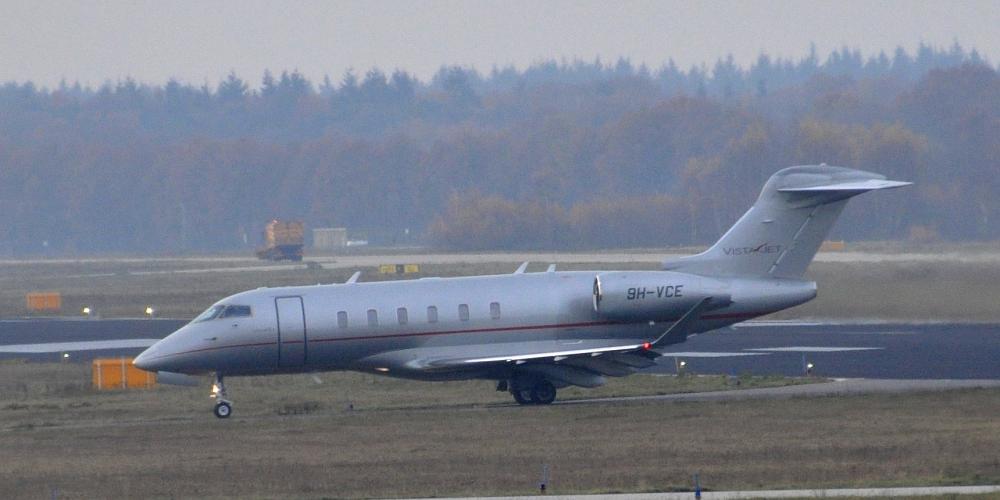
Bombardier Challenger 350 (BD-100-1A10), registration 9H-VCE, built 2014, serial number 20540
Eindhoven Airport (EIN), Eindhoven, Netherlands, 24 November 2016
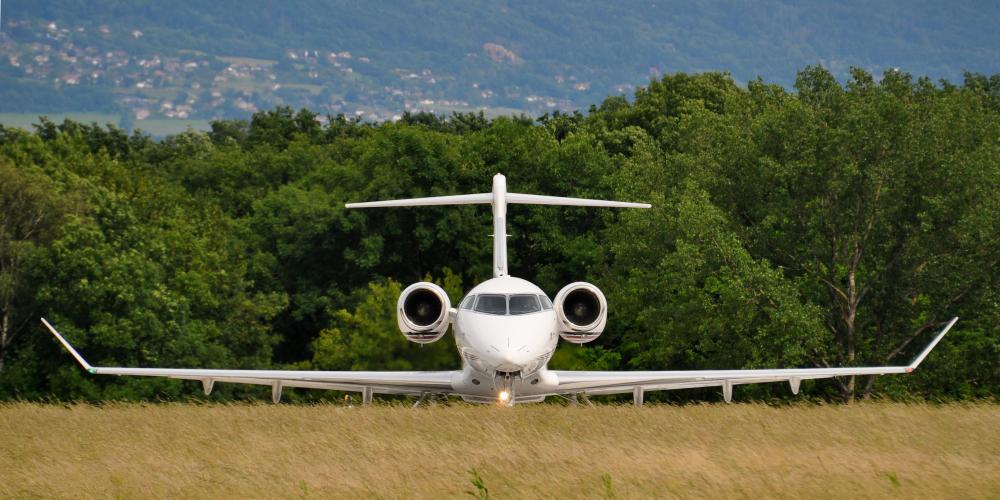
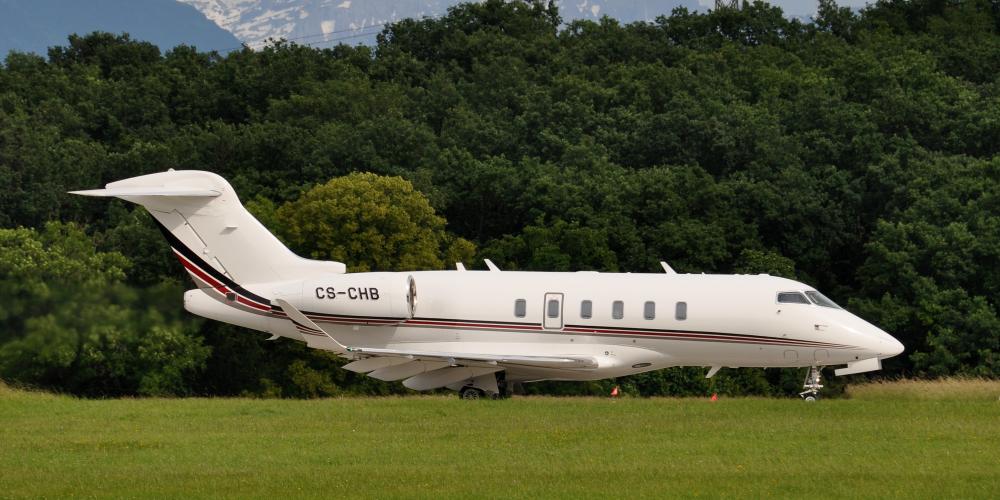
Bombardier Challenger 350 (BD-100-1A10), registration CS-CHB, built 2015, serial number 20553
Cointrin (GVA), Geneva, Switzerland, 15 July 2016
de Havilland Canada: Dash-8
Challenger: 300 | 350 |
600 | 601 |
604 | 605 |
650 | 850
Global: Express |
5000 | 6000
Learjet: 40 |
45 | 60 |
75
Canadair: CRJ | CRJ100 |
CRJ200 | CRJ700 |
CRJ900 |
CRJ1000
Bombardier: CSeries |
CS100 | CS300
Bombardier Challenger 600
The Bombardier Challenger 600 series is a family of business jets. It was first produced by Canadair as an independent company and then produced from 1986 by Canadair as a division of Bombardier Aerospace. Variants are CL-600 (built from 1978 to 1982), CL-601, CL-604, CL-605 and CL-650.
Challengers can be identified visually by their distinctive double slotted hinged flap design, where the fairings can be seen below the wings, a sight much more common on commercial airliners.
de Havilland Canada: Dash-8
Challenger: 300 | 350 |
600 | 601 |
604 | 605 |
650 | 850
Global: Express |
5000 | 6000
Learjet: 40 |
45 | 60 |
75
Canadair: CRJ | CRJ100 |
CRJ200 | CRJ700 |
CRJ900 |
CRJ1000
Bombardier: CSeries |
CS100 | CS300
Bombardier Challenger 601
A refined version of the 600 including winglets to decrease drag and more powerful General Electric CF34-1A turbofans.

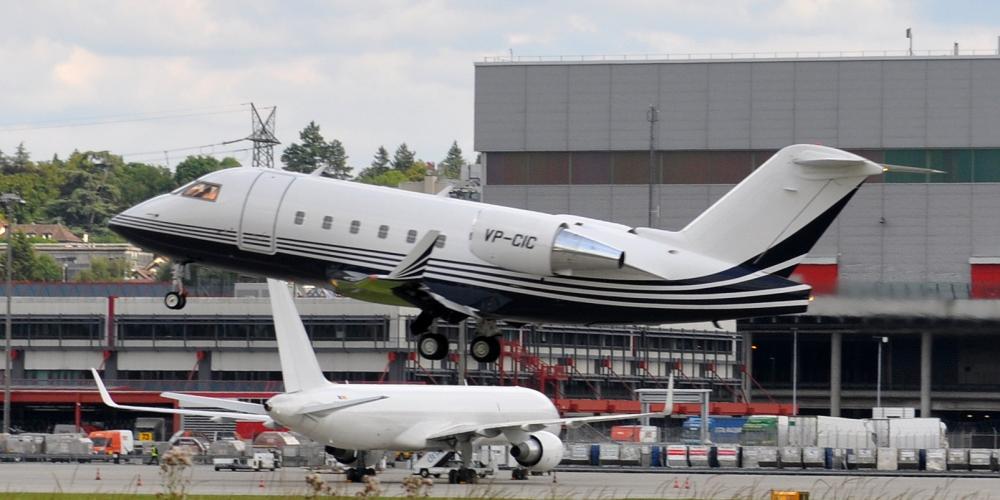
Bombardier Challenger 601-3A (CL-600-2B16), registration VP-CIC, built 1987, serial number 5011
Cointrin (GVA), Geneva, Switzerland, 17 July 2016
de Havilland Canada: Dash-8
Challenger: 300 | 350 |
600 | 601 |
604 | 605 |
650 | 850
Global: Express |
5000 | 6000
Learjet: 40 |
45 | 60 |
75
Canadair: CRJ | CRJ100 |
CRJ200 | CRJ700 |
CRJ900 |
CRJ1000
Bombardier: CSeries |
CS100 | CS300
Bombardier Challenger 604
A major upgrade of the 601 design, incorporating more advanced GE CF34-3B engines; increased fuel capacity, including saddle tanks in the rear of the aircraft; new undercarriage for a higher takeoff and landing weight; structural improvements to wings and tail; and a new Rockwell Collins ProLine 4 avionics system.
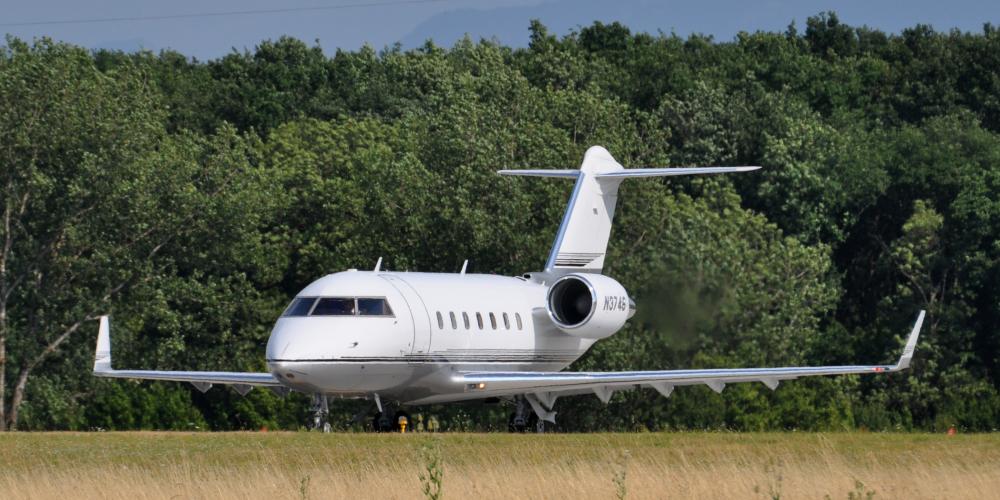

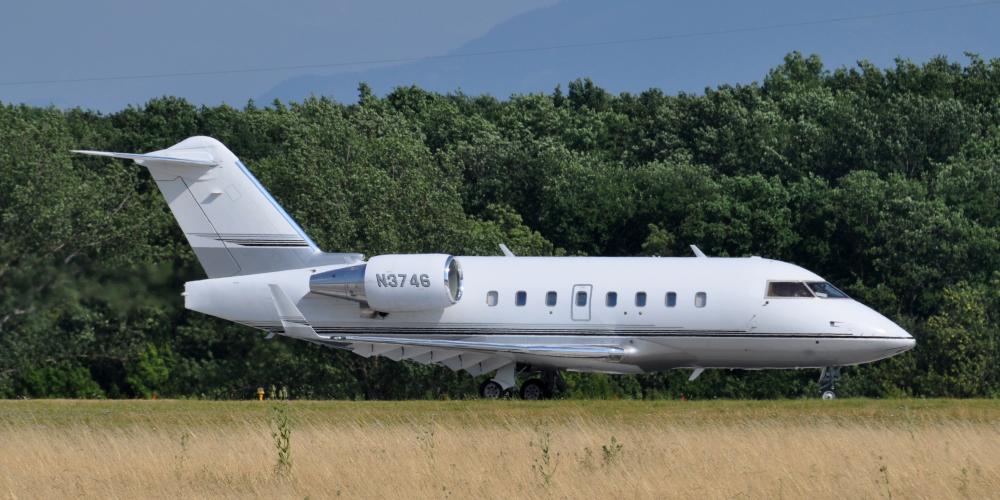

Bombardier Challenger 604 (CL-600-2B16), registration N3746, built 1998, serial number 5368
Cointrin (GVA), Geneva, Switzerland, 19 July 2015
de Havilland Canada: Dash-8
Challenger: 300 | 350 |
600 | 601 |
604 | 605 |
650 | 850
Global: Express |
5000 | 6000
Learjet: 40 |
45 | 60 |
75
Canadair: CRJ | CRJ100 |
CRJ200 | CRJ700 |
CRJ900 |
CRJ1000
Bombardier: CSeries |
CS100 | CS300
Bombardier Challenger 605
Introduced in early 2006 as an avionics and structural upgrade of the 604 design. Structural improvements include larger cabin windows. Cockpit instrumentation updated with the Collins Proline 21 avionics and "electronic flight bag" capability. It can be visually identified by a new, rounded tailcone.
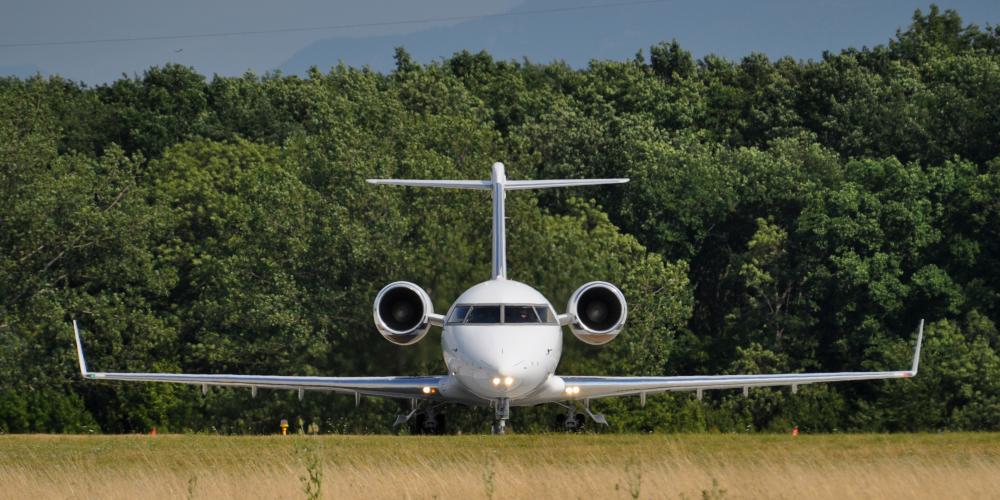

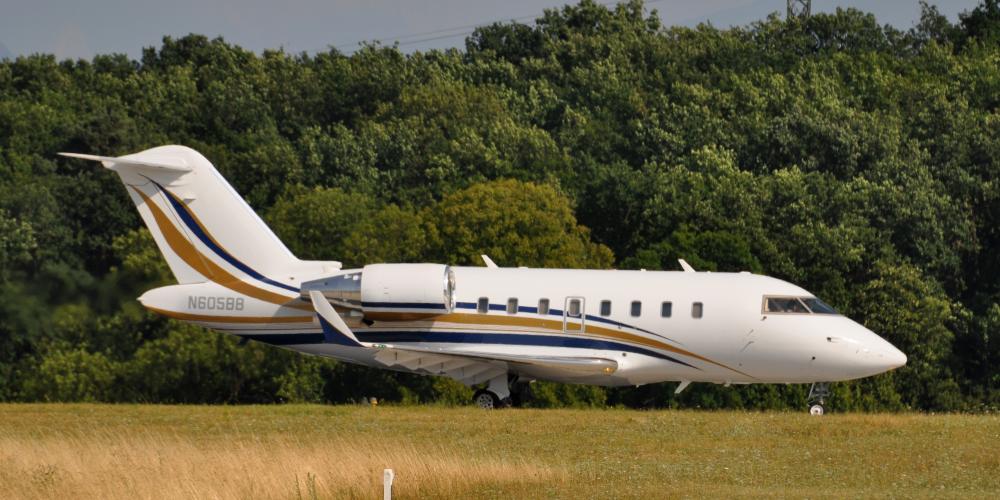
Bombardier Challenger 605 (CL-600-2B16), registration N605BB, built 2010, serial number 5864
Cointrin (GVA), Geneva, Switzerland, 19 July 2015
de Havilland Canada: Dash-8
Challenger: 300 | 350 |
600 | 601 |
604 | 605 |
650 | 850
Global: Express |
5000 | 6000
Learjet: 40 |
45 | 60 |
75
Canadair: CRJ | CRJ100 |
CRJ200 | CRJ700 |
CRJ900 |
CRJ1000
Bombardier: CSeries |
CS100 | CS300
Bombardier Challenger 650
The CL-650 is a major upgrade of the CL-605. It includes a completely redesigned interior cabin, the new "Vision" flight Deck which is a Rockwell Collins Proline 21 Enhanced, and a 5% increase of takeoff thrust.
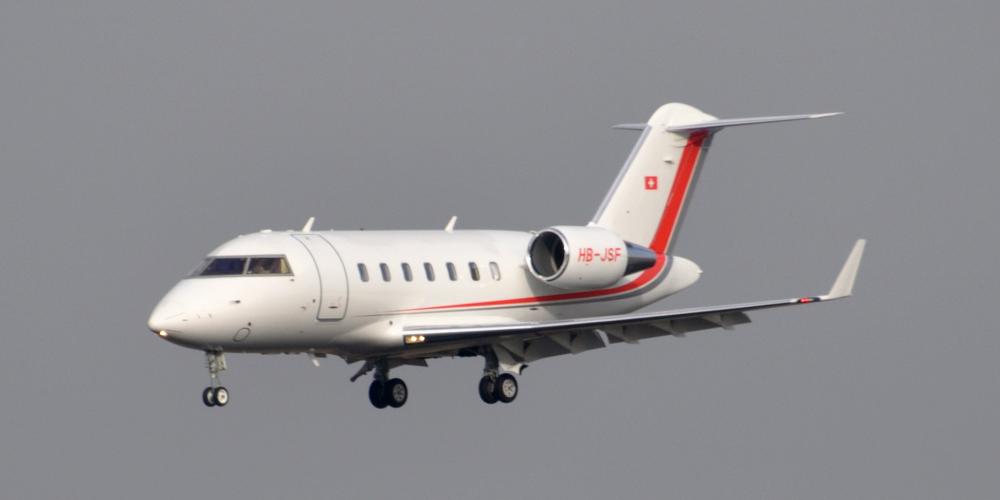
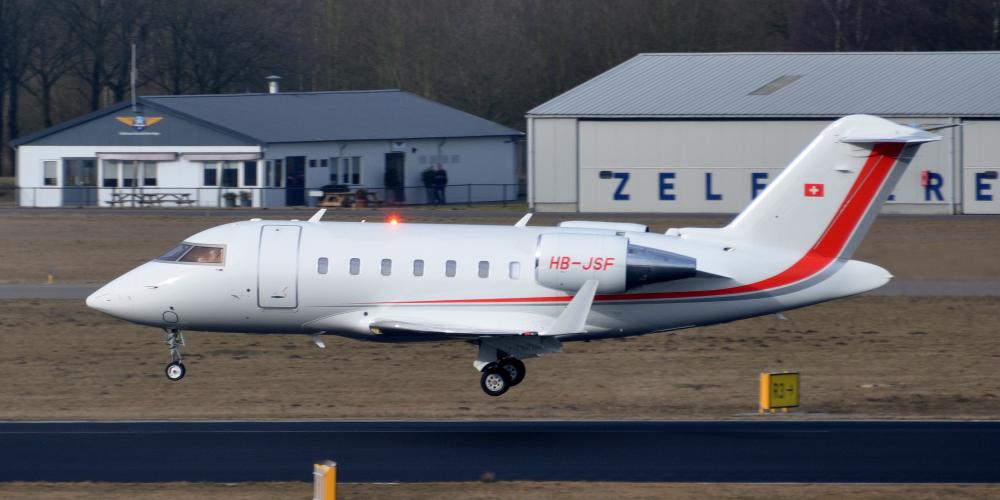

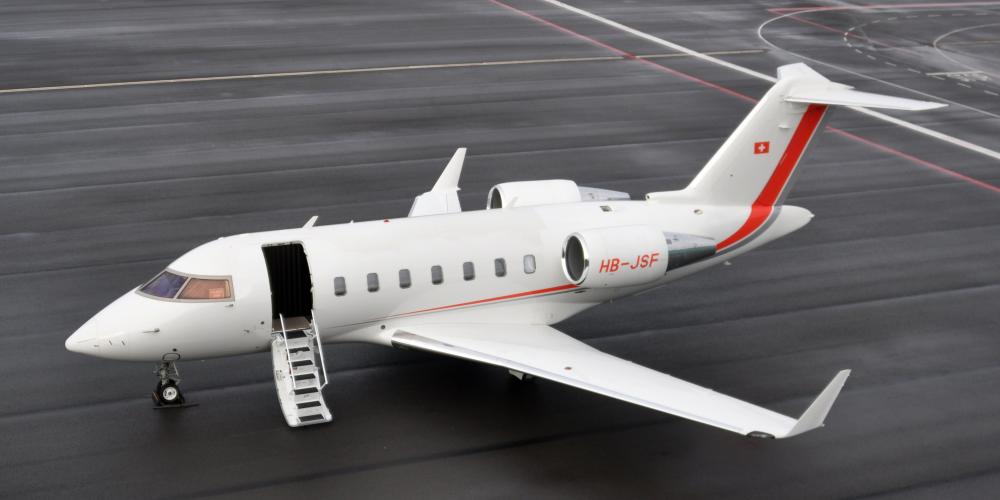
Bombardier Challenger 650 (CL-600-2B16), registration HB-JSF, built 2016, serial number 6073
Eindhoven Airport (EIN), Eindhoven, Netherlands, 2 February 2017
de Havilland Canada: Dash-8
Challenger: 300 | 350 |
600 | 601 |
604 | 605 |
650 | 850
Global: Express |
5000 | 6000
Learjet: 40 |
45 | 60 |
75
Canadair: CRJ | CRJ100 |
CRJ200 | CRJ700 |
CRJ900 |
CRJ1000
Bombardier: CSeries |
CS100 | CS300
Bombardier Challenger 850
The Challenger 850 is the updated version of the Challenger 800. It is the largest super-midsize business aircraft offered by Bombardier Aerospace, capable of accommodating 15-19 passengers with a transcontinental range and a high-speed cruise of Mach 0.80.
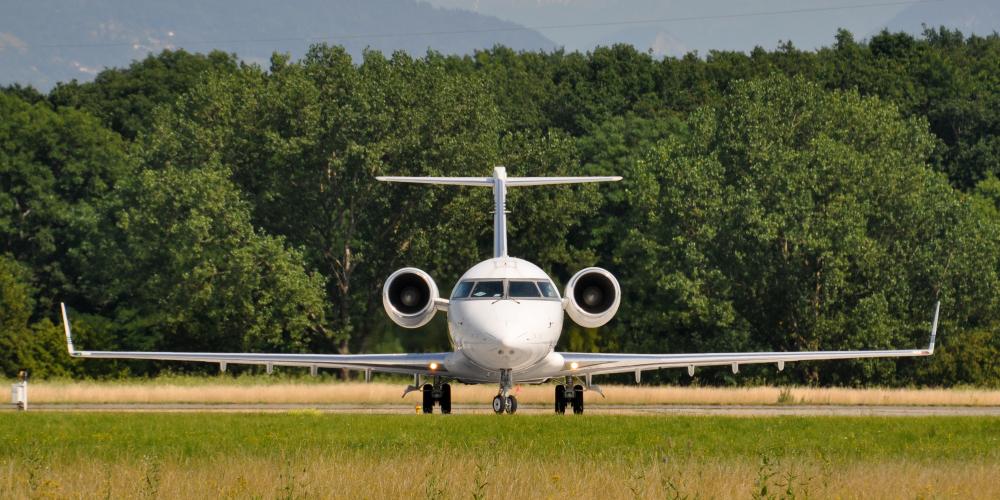
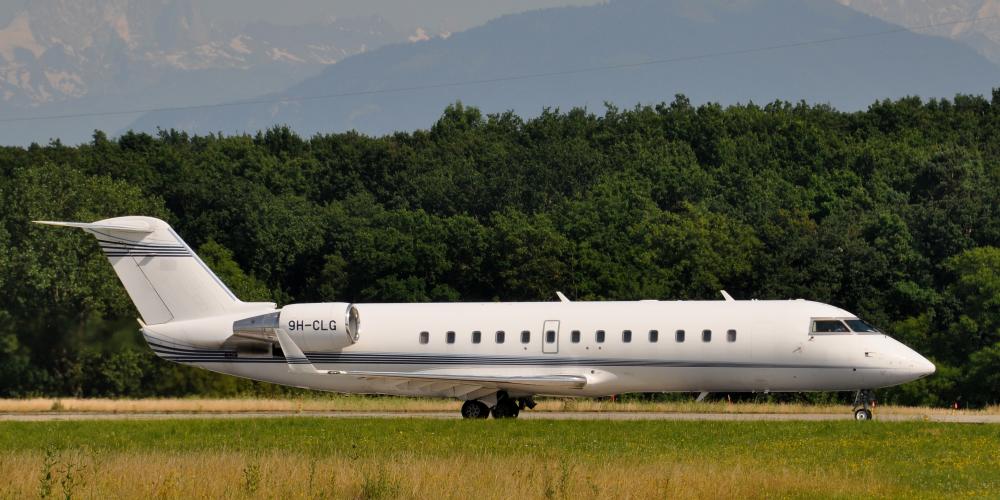
Bombardier Challenger 850 (CL-600-2B19), registration 9H-CLG, built 2006, serial number 8063
Cointrin (GVA), Geneva, Switzerland, 20 July 2016
de Havilland Canada: Dash-8
Challenger: 300 | 350 |
600 | 601 |
604 | 605 |
650 | 850
Global: Express |
5000 | 6000
Learjet: 40 |
45 | 60 |
75
Canadair: CRJ | CRJ100 |
CRJ200 | CRJ700 |
CRJ900 |
CRJ1000
Bombardier: CSeries |
CS100 | CS300
Bombardier Global Express
The Bombardier Global Express is a large cabin, ultra long range business jet manufactured in Toronto, Ontario, Canada. Bombardier Aerospace began studies in 1991 and the aircraft was officially launched in 1993. The first flight occurred on October 13, 1996. The Global Express features an advanced all new supercritical airfoil with a 35° sweep and winglets, plus a new T-tail. Bombardier subsidiaries have three specific roles in the project: Canadair is the design leader and manufactures the nose; Short Brothers, Belfast is responsible for the design and manufacture of the engine nacelles, horizontal stabiliser and forward fuselage; and de Havilland Canada builds the rear fuselage and vertical tail and carries out final assembly.

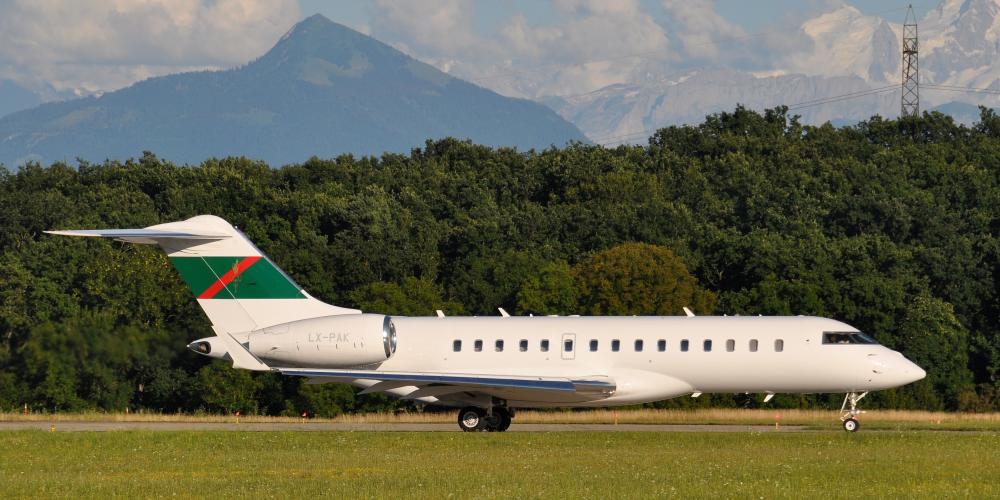
Bombardier Global Express (BD-700-1A10), registration LX-PAK, built 2006, serial number 9197
Cointrin (GVA), Geneva, Switzerland, 29 July 2016
de Havilland Canada: Dash-8
Challenger: 300 | 350 |
600 | 601 |
604 | 605 |
650 | 850
Global: Express |
5000 | 6000
Learjet: 40 |
45 | 60 |
75
Canadair: CRJ | CRJ100 |
CRJ200 | CRJ700 |
CRJ900 |
CRJ1000
Bombardier: CSeries |
CS100 | CS300
Bombardier Global 5000
The Global 5000 (model designation BD-700-1A11) is a derivative based on Global Express. Seating capacity is up to 19 passengers. The aircraft was announced on 25 October 2001 with the official launch on 5 February 2002. The average trip lengths for most operators is 2.5 hours where the aircraft will cruise between Mach 0.85 and Mach 0.89, making it one of the fastest long range jets available today.
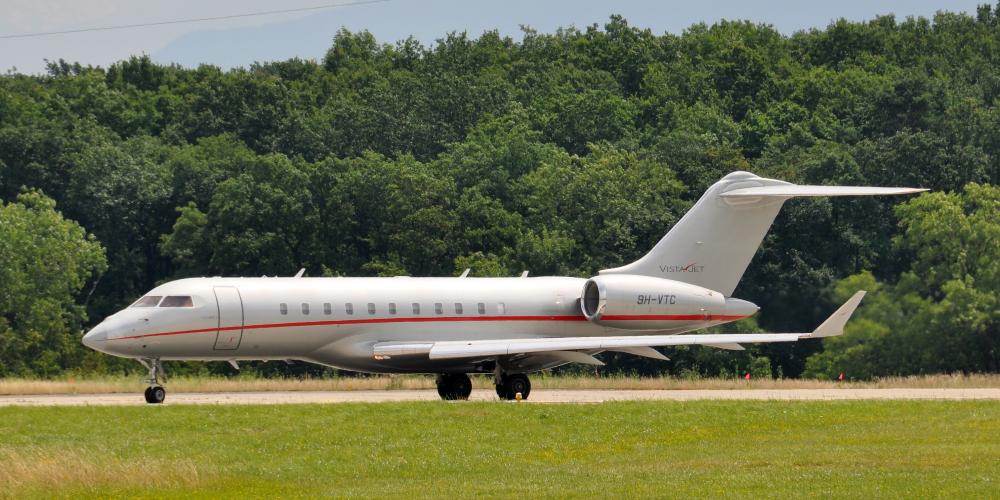
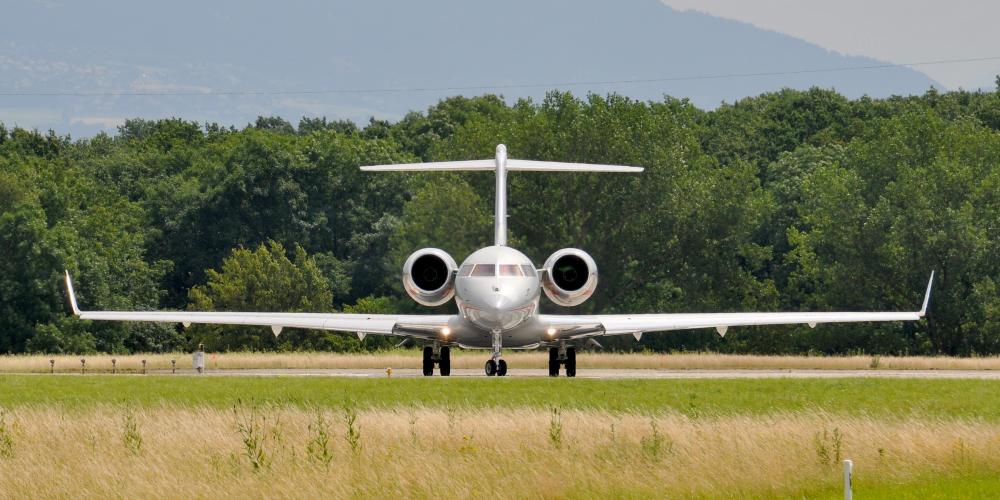
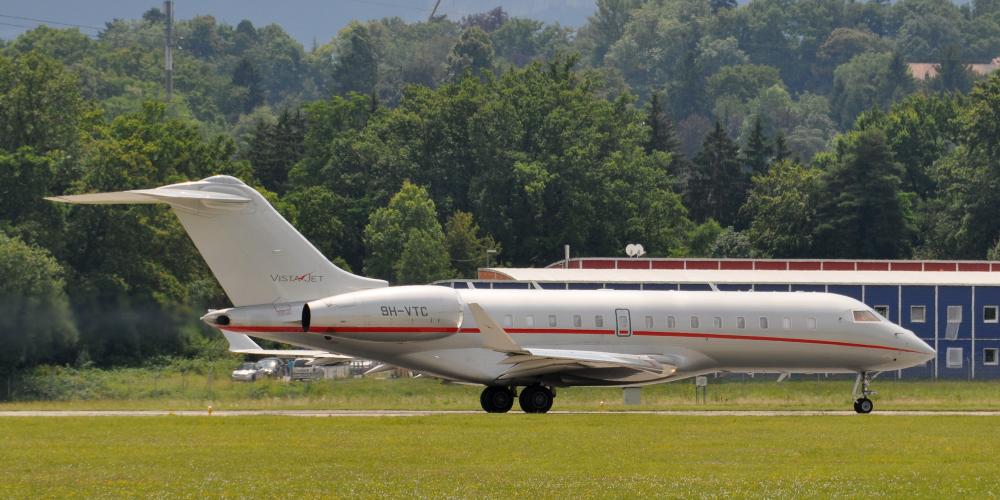
Bombardier Global 5000 (BD-700-1A11), registration 9H-VTC, built 2013, serial number 9553
Cointrin (GVA), Geneva, Switzerland, 11 July 2016
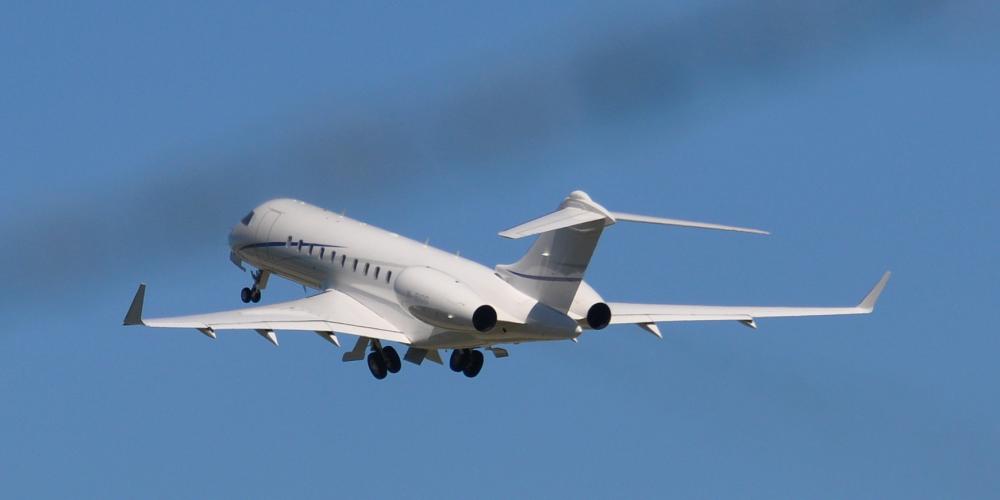
Bombardier Global 5000 (BD-700-1A11), registration M-BIGG, built 2013, serial number 9597
Cointrin (GVA), Geneva, Switzerland, 3 May 2017
de Havilland Canada: Dash-8
Challenger: 300 | 350 |
600 | 601 |
604 | 605 |
650 | 850
Global: Express |
5000 | 6000
Learjet: 40 |
45 | 60 |
75
Canadair: CRJ | CRJ100 |
CRJ200 | CRJ700 |
CRJ900 |
CRJ1000
Bombardier: CSeries |
CS100 | CS300
Bombardier Global 6000
The Global 6000 (marketed as Global Express XRS until May 2011) is an improved version of the original aircraft, offering higher cruise speed, increased range, improved cabin layout and lighting. It entered service in early 2006.
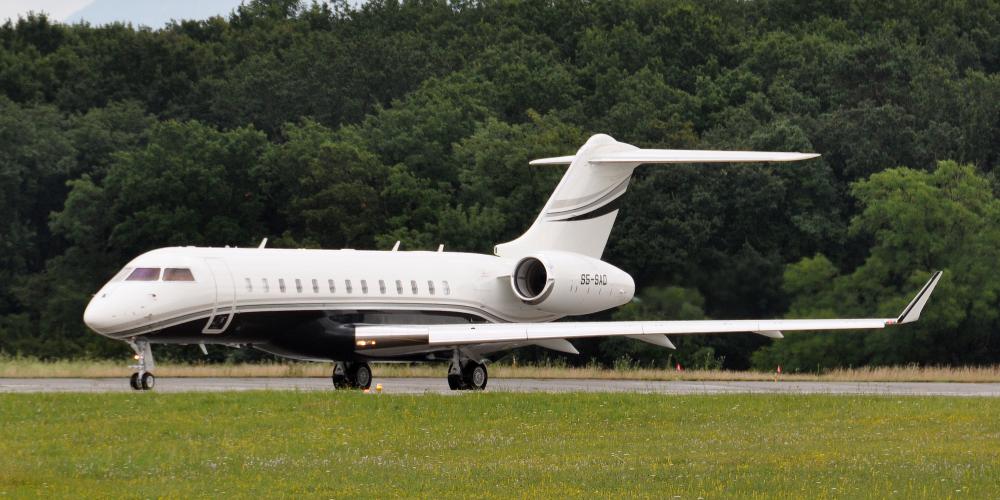
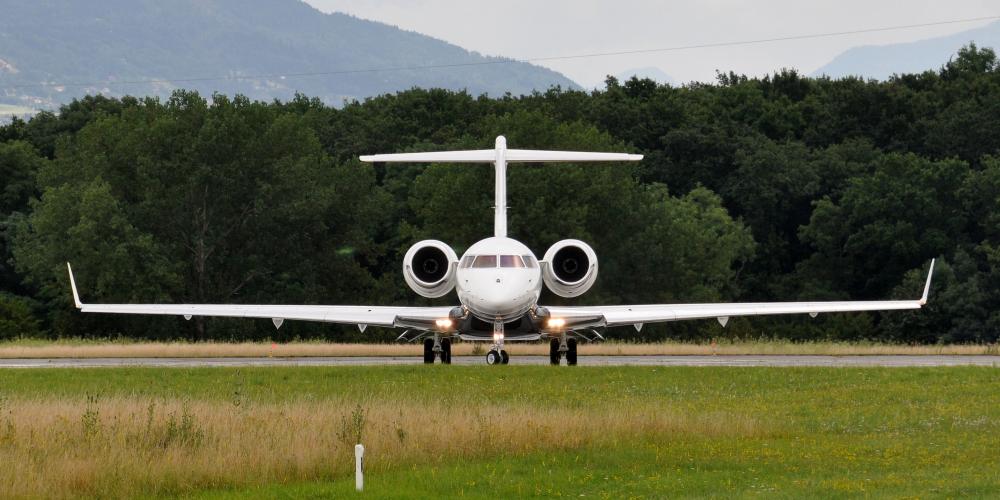
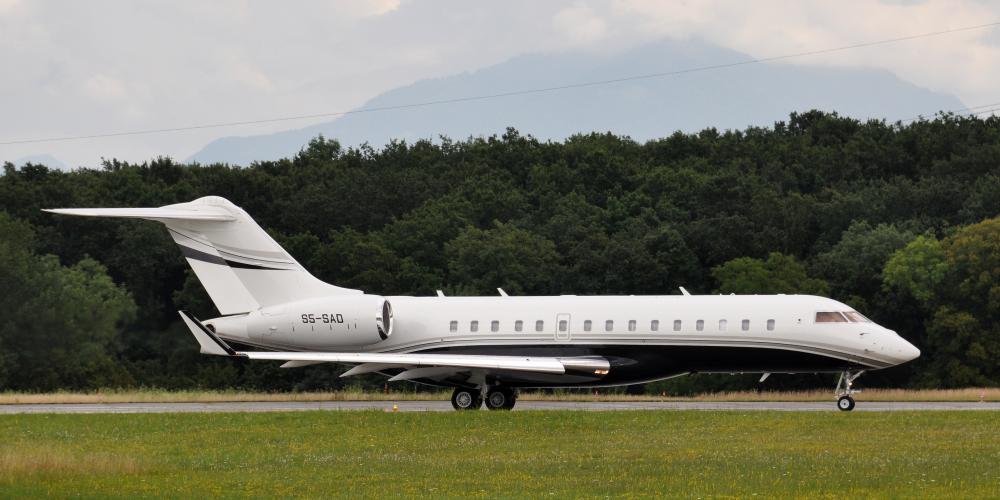
Bombardier Global 6000 (BD-700-1A10), registration S5-SAD, built 2013, serial number 9553
Cointrin (GVA), Geneva, Switzerland, 22 July 2016
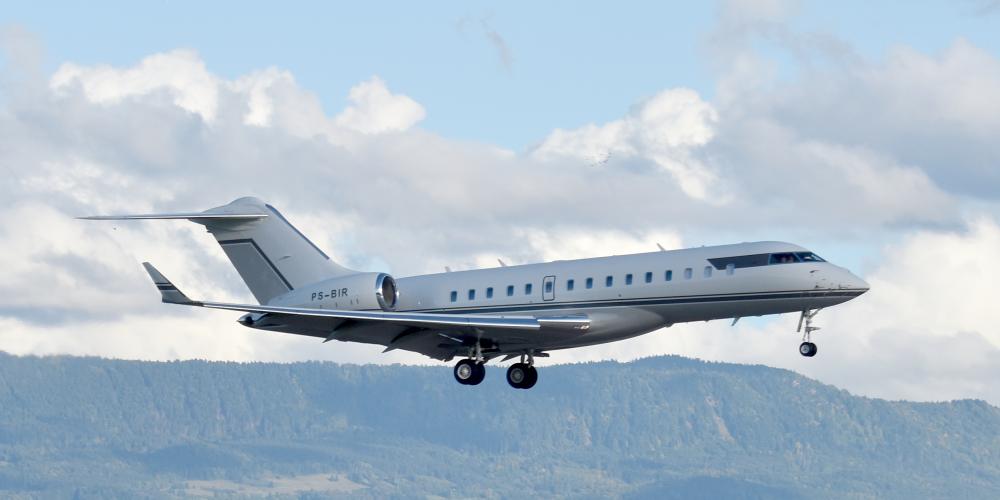
Bombardier Global 6000 (BD-700-1A10), registration PS-BIR, built 2012, serial number 9514
Cointrin (GVA), Geneva, Switzerland, 2 October 2022
de Havilland Canada: Dash-8
Challenger: 300 | 350 |
600 | 601 |
604 | 605 |
650 | 850
Global: Express |
5000 | 6000
Learjet: 40 |
45 | 60 |
75
Canadair: CRJ | CRJ100 |
CRJ200 | CRJ700 |
CRJ900 |
CRJ1000
Bombardier: CSeries |
CS100 | CS300
Bombardier Learjet 40
The Learjet 40 (LJ40) is derived from the Learjet 45, but with a shorter fuselage (by 24.5 inches/60 cm), and is powered by two Honeywell TFE731-20AR engines, known as the "AR" engines. The prototype aircraft, a rebuilt Model 45, first flew on August 31, 2002, and the first production aircraft performed its maiden flight on September 5, 2002. Both flights took place from the Wichita Mid-Continent Airport. The LJ40 entered into service in January, 2004.
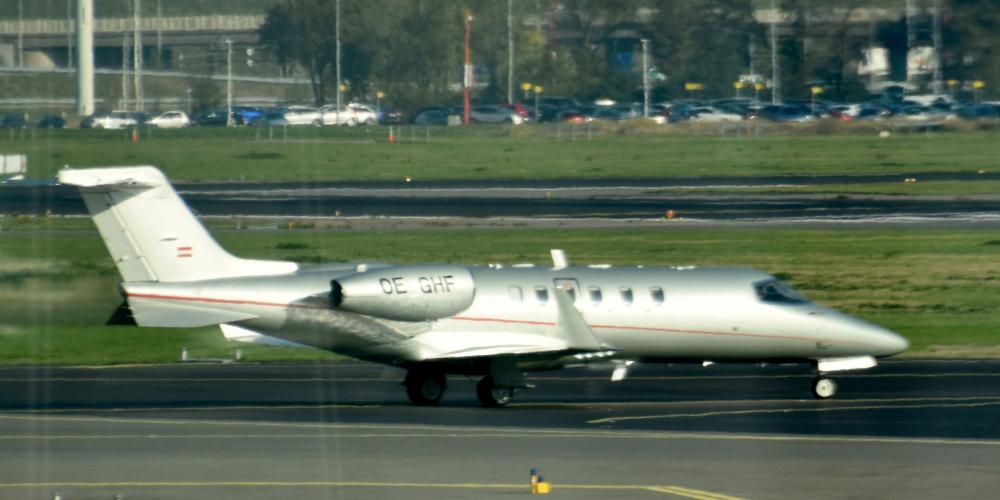
Bombardier Learjet 40, registration OE-GHF, built 2012, serial number 45-438
Cointrin (GVA), Geneva, Switzerland, 8 July 2016
de Havilland Canada: Dash-8
Challenger: 300 | 350 |
600 | 601 |
604 | 605 |
650 | 850
Global: Express |
5000 | 6000
Learjet: 40 |
45 | 60 |
75
Canadair: CRJ | CRJ100 |
CRJ200 | CRJ700 |
CRJ900 |
CRJ1000
Bombardier: CSeries |
CS100 | CS300
Bombardier Learjet 45
The Learjet 45 (LJ45) aircraft is a mid-size business jet aircraft produced by Bombardier Aerospace. The development of the LJ45 was announced by Bombardier in September 1992, and the first flight of the prototype aircraft took place on 7 October 1995. FAA certification was delayed, and finally granted in September 1997, with the first customer aircraft subsequently delivered in January 1998.
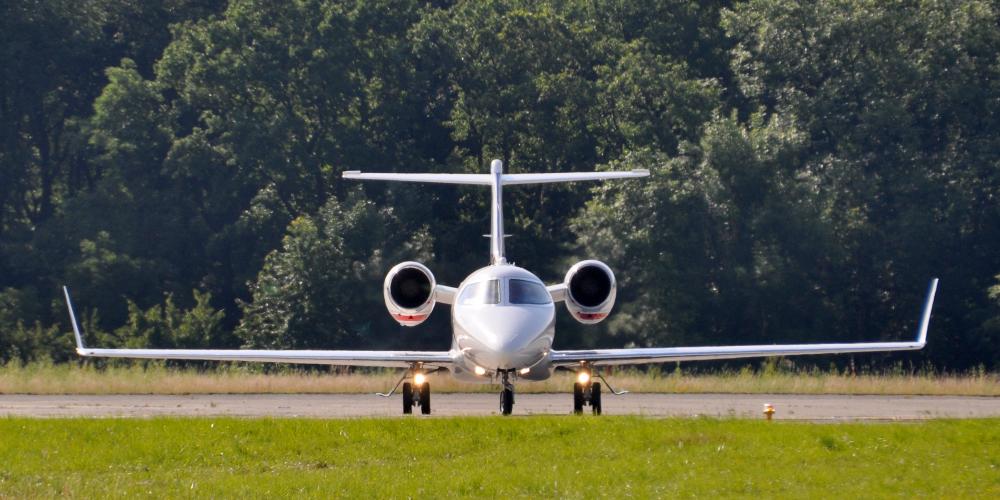
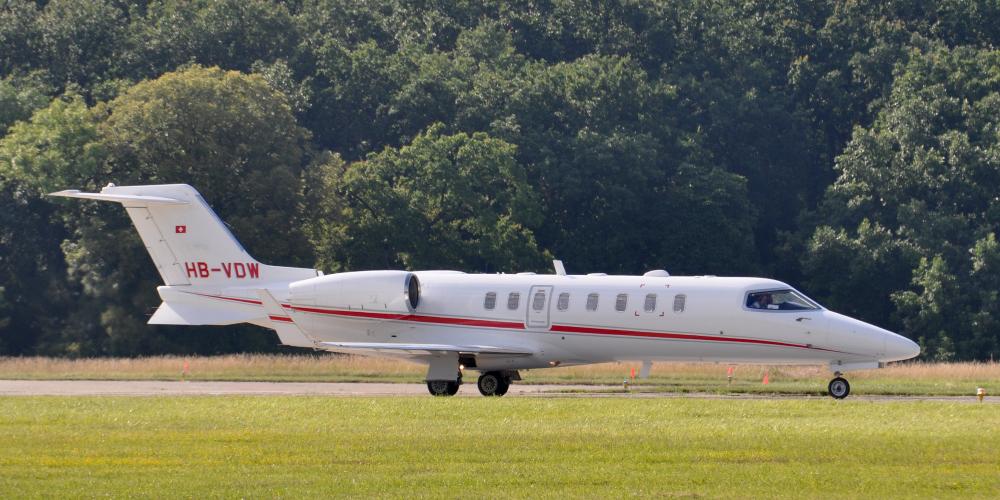
Bombardier Learjet 45XR, registration HB-VDW, built 2012, serial number 45-438
Cointrin (GVA), Geneva, Switzerland, 8 July 2016
de Havilland Canada: Dash-8
Challenger: 300 | 350 |
600 | 601 |
604 | 605 |
650 | 850
Global: Express |
5000 | 6000
Learjet: 40 |
45 | 60 |
75
Canadair: CRJ | CRJ100 |
CRJ200 | CRJ700 |
CRJ900 |
CRJ1000
Bombardier: CSeries |
CS100 | CS300
Bombardier Learjet 60
The Learjet 60 is a mid-size cabin, medium-range business jet aircraft manufactured in Wichita, Kansas, USA. It is an improved version of the Learjet 55, with a longer fuselage and more powerful turbofan engines, made the first flew on 10 October 1990 and received FAA certification in January 1993.

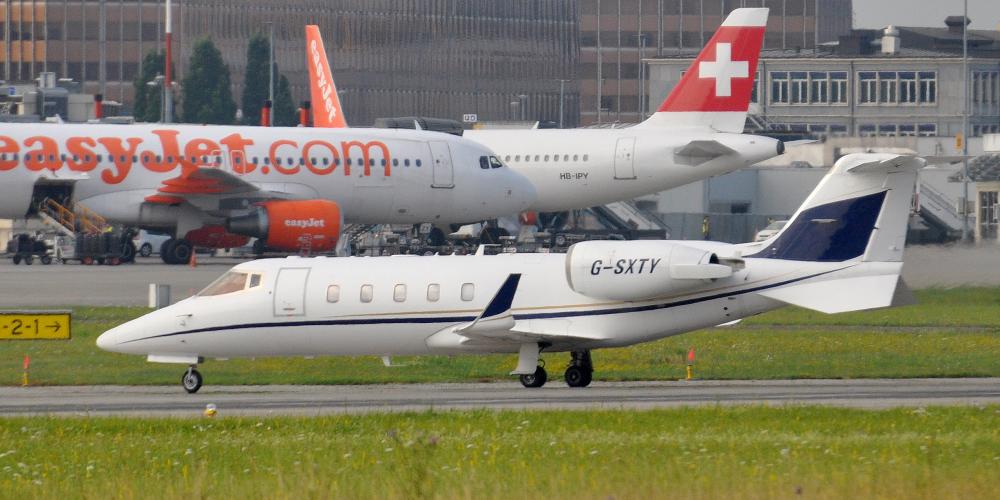
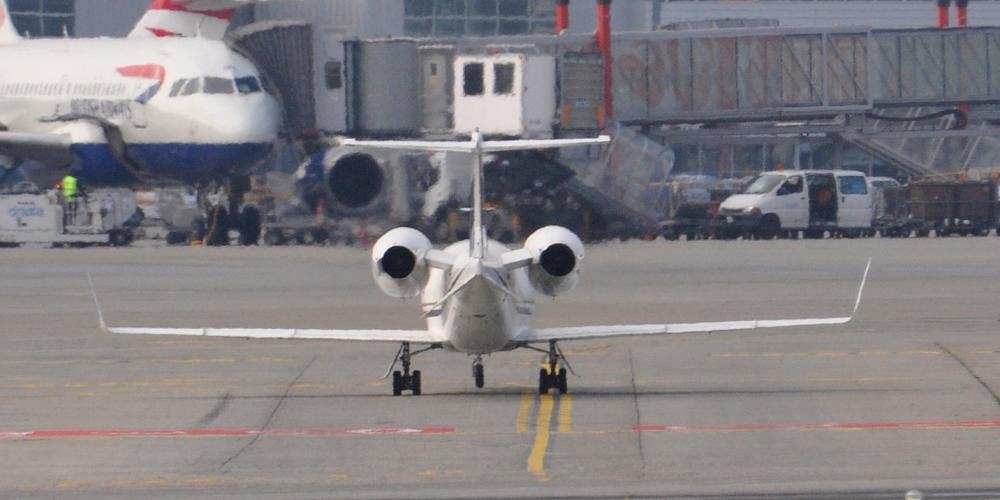
Bombardier Learjet 60, registration G-SXTY, built 2004, serial number 60-280
Cointrin (GVA), Geneva, Switzerland, 24 July 2016

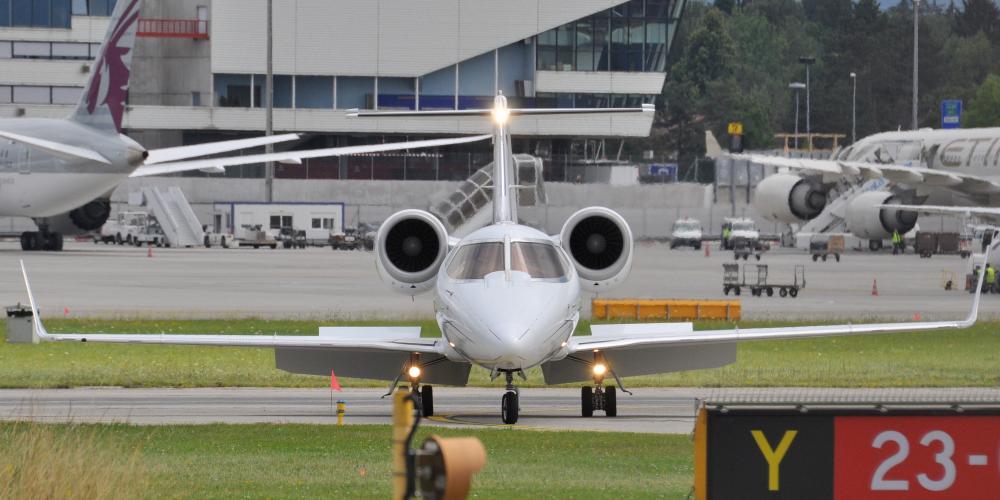
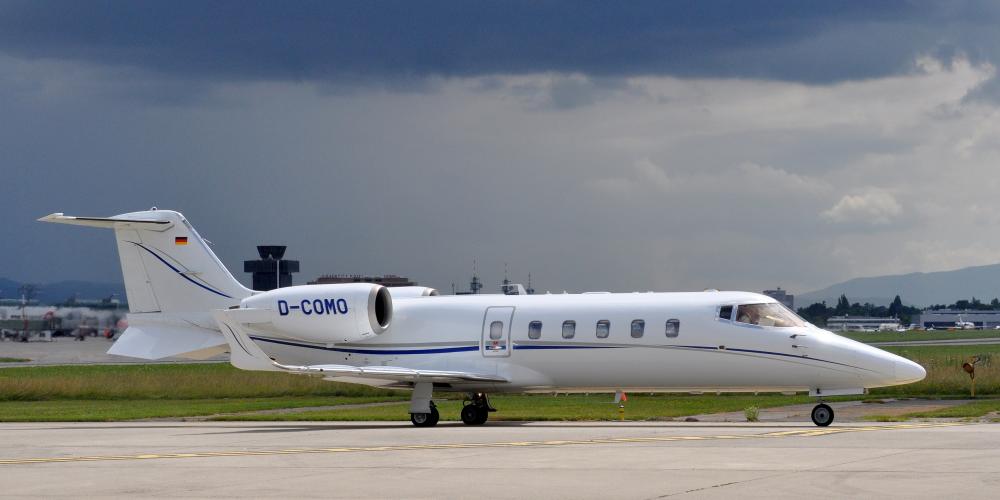
Bombardier Learjet 60, registration D-COMO, built 2008, serial number 60-350
Cointrin (GVA), Geneva, Switzerland, 23 July 2016
de Havilland Canada: Dash-8
Challenger: 300 | 350 |
600 | 601 |
604 | 605 |
650 | 850
Global: Express |
5000 | 6000
Learjet: 40 |
45 | 60 |
75
Canadair: CRJ | CRJ100 |
CRJ200 | CRJ700 |
CRJ900 |
CRJ1000
Bombardier: CSeries |
CS100 | CS300
Bombardier Learjet 75
The Learjet 70/75 is a Learjet development program by Canadian aircraft manufacturer Bombardier Aerospace. The light business jet is being developed in anticipation of business aircraft recovery predicted by Bombardier. These models feature new avionics, winglets and powerful engines that use less fuel.
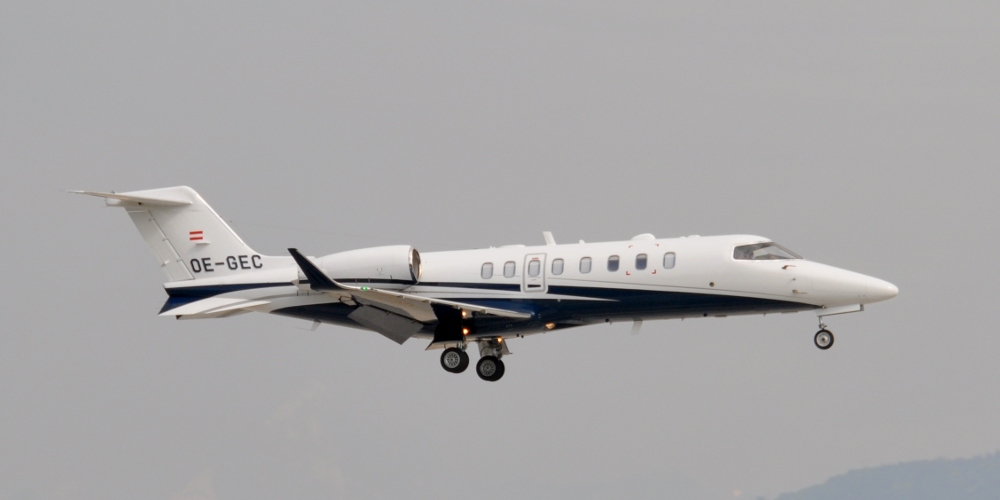
Bombardier Learjet 75, registration OE-GEC, built 2014, serial number 45-491
Cointrin (GVA), Geneva, Switzerland, 4 July 2015
de Havilland Canada: Dash-8
Challenger: 300 | 350 |
600 | 601 |
604 | 605 |
650 | 850
Global: Express |
5000 | 6000
Learjet: 40 |
45 | 60 |
75
Canadair: CRJ | CRJ100 |
CRJ200 | CRJ700 |
CRJ900 |
CRJ1000
Bombardier: CSeries |
CS100 | CS300
Bombardier CRJ
The Bombardier CRJ (for Canadair Regional Jet) is a family of regional airliners manufactured by Bombardier, consisting of:
CRJ100 (50 seats),
CRJ200 (50 seats),
CRJ700 (70 seats),
CRJ705 (75 seats),
CRJ900 (90 seats),
CRJ1000 (100 seats).
The aircraft was based on the Canadair Challenger design, which was purchased by Canadair from Bill Lear in 1976. In 1987, studies began for a much more ambitious stretched configuration, leading to the formal launch of the Canadair Regional Jet program in the spring of 1989. The "Canadair" name was retained despite the fact that Bombardier had bought out the company.
de Havilland Canada: Dash-8
Challenger: 300 | 350 |
600 | 601 |
604 | 605 |
650 | 850
Global: Express |
5000 | 6000
Learjet: 40 |
45 | 60 |
75
Canadair: CRJ | CRJ100 |
CRJ200 | CRJ700 |
CRJ900 |
CRJ1000
Bombardier: CSeries |
CS100 | CS300
Bombardier CRJ100
The CL-600 design was stretched 5.92 meters to create the CRJ100, with fuselage plugs fore and aft of the wing, two more emergency exit doors, plus a reinforced and modified wing. Typical seating was 50 passengers, the maximum load being 52 passengers. The CRJ100 featured a Collins ProLine 4 avionics suite, Collins weather radar, General Electric CF34-3A1 turbofans, new wings with extended span, more fuel capacity, and improved landing gear to handle the higher weights. It was followed by the CRJ100 ER subvariant with 20% more range, and the CRJ100 LR subvariant with 40% more range than the standard CRJ100. The CRJ100 SE sub-variant was produced to more closely meet the needs of corporate and executive operators.
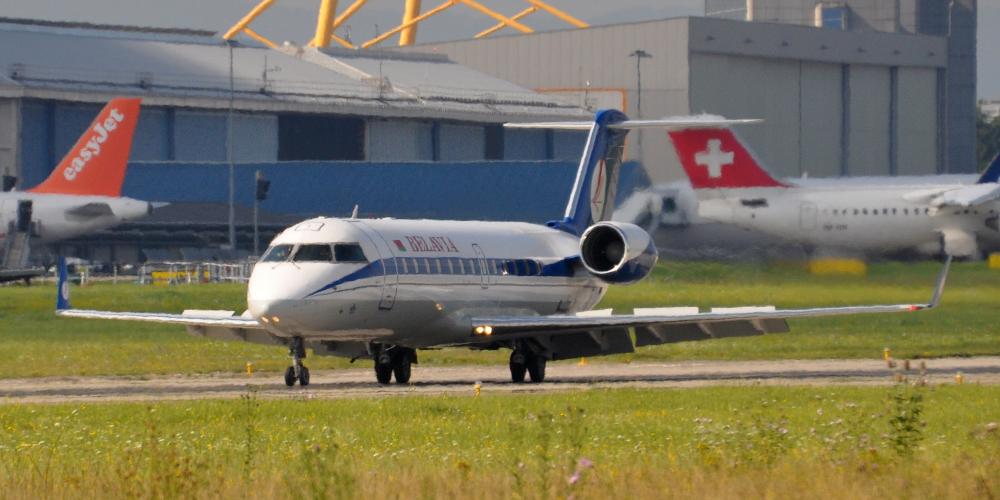
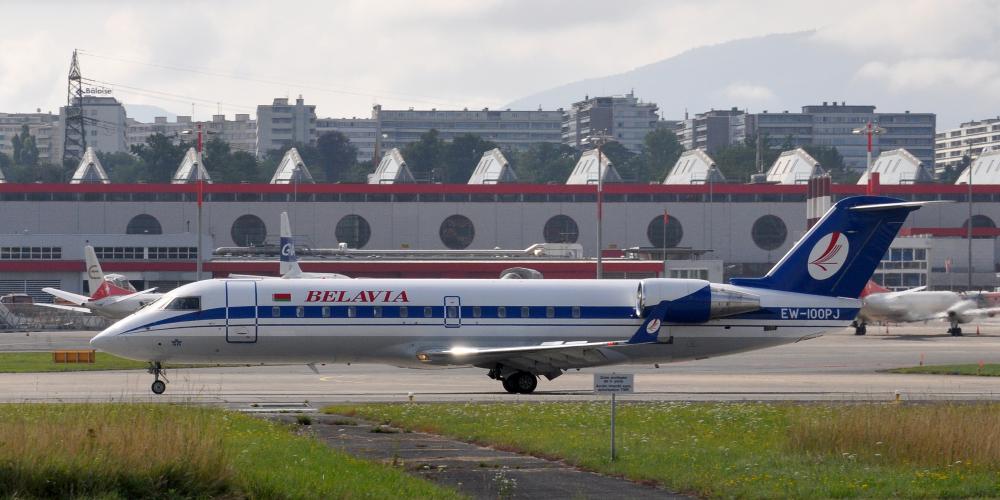
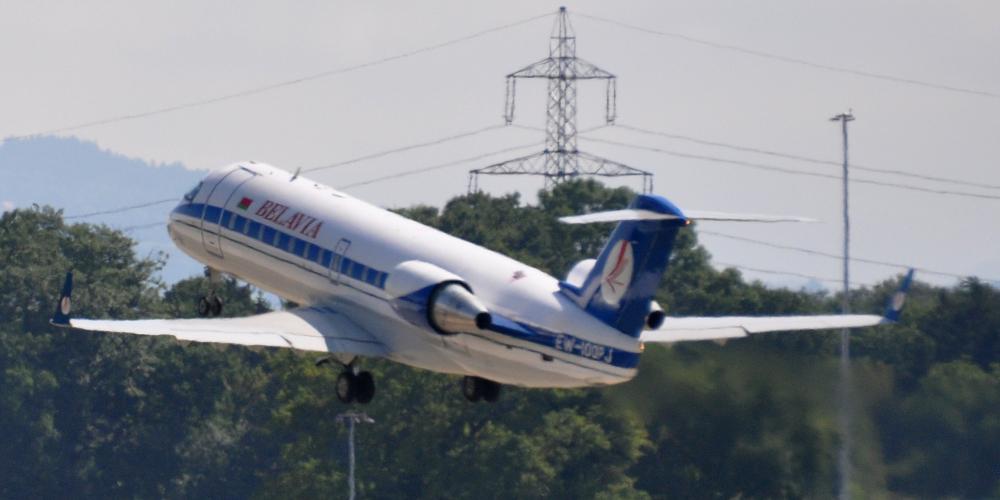
Bombardier CRJ100 ER (CL-600-2B19), registration EW-100PJ, built 1999, serial number 7309
Cointrin (GVA), Geneva, Switzerland, 24 July 2016
de Havilland Canada: Dash-8
Challenger: 300 | 350 |
600 | 601 |
604 | 605 |
650 | 850
Global: Express |
5000 | 6000
Learjet: 40 |
45 | 60 |
75
Canadair: CRJ | CRJ100 |
CRJ200 | CRJ700 |
CRJ900 |
CRJ1000
Bombardier: CSeries |
CS100 | CS300
Bombardier CRJ200
The CRJ200 is identical to the 100 model except for more efficient engines of the General Electric CF34-3B1 model.
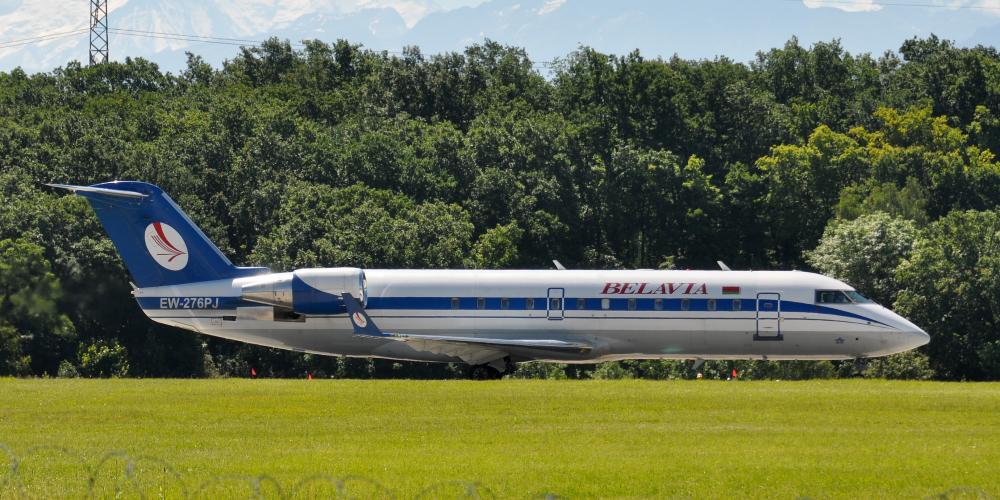
Bombardier CRJ200 ER (CL-600-2B19), registration EW-276PJ, built 2003, serial number 7799
Cointrin (GVA), Geneva, Switzerland, 3 July 2016
de Havilland Canada: Dash-8
Challenger: 300 | 350 |
600 | 601 |
604 | 605 |
650 | 850
Global: Express |
5000 | 6000
Learjet: 40 |
45 | 60 |
75
Canadair: CRJ | CRJ100 |
CRJ200 | CRJ700 |
CRJ900 |
CRJ1000
Bombardier: CSeries |
CS100 | CS300
Bombardier CRJ700
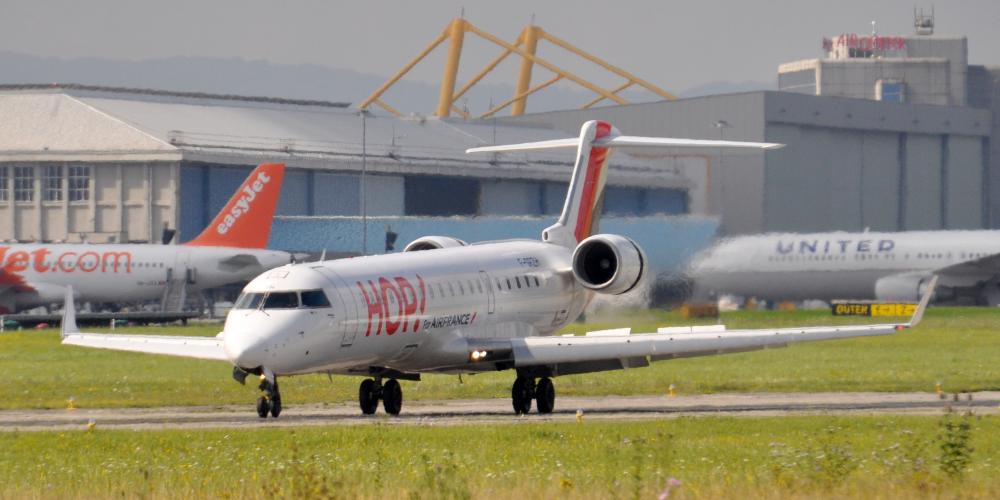
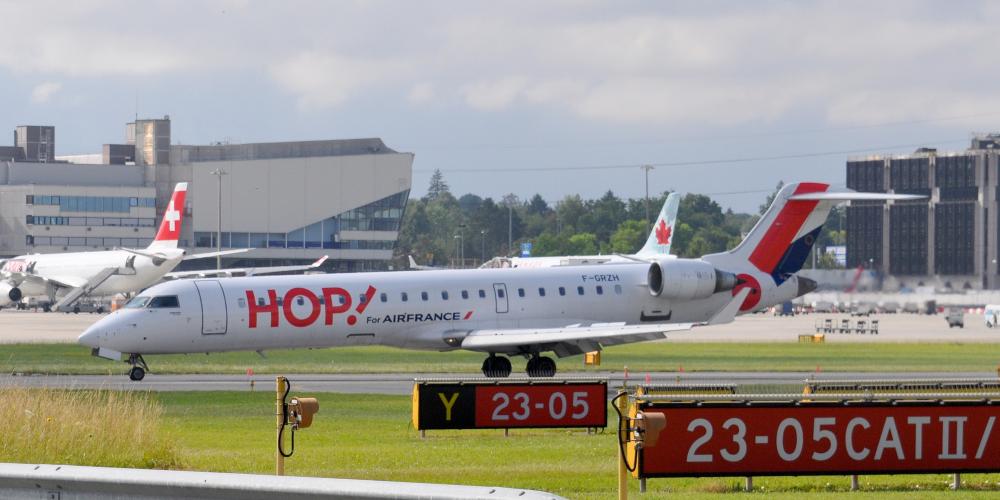
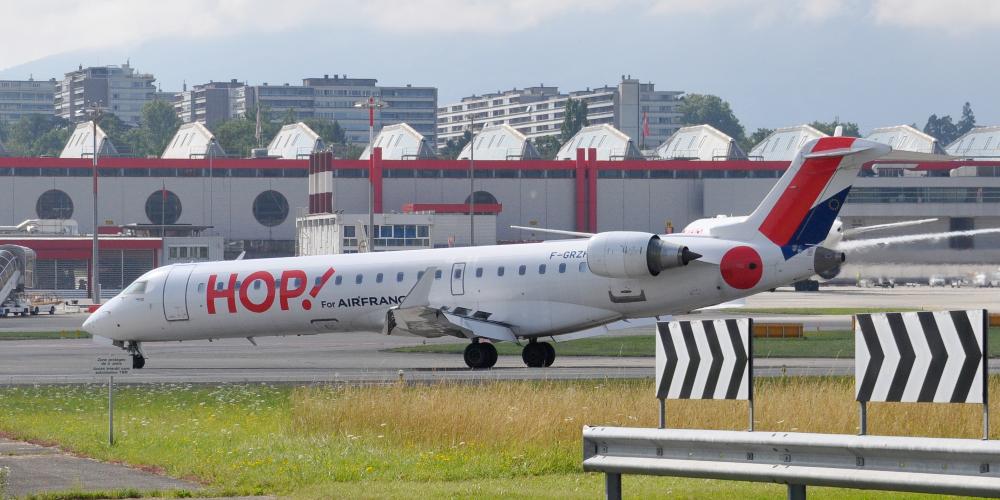
Bombardier CRJ-701 (CL-600-2C10), registration F-GRZH, built 2003, serial number 10089
Cointrin (GVA), Geneva, Switzerland, 24 July 2016
de Havilland Canada: Dash-8
Challenger: 300 | 350 |
600 | 601 |
604 | 605 |
650 | 850
Global: Express |
5000 | 6000
Learjet: 40 |
45 | 60 |
75
Canadair: CRJ | CRJ100 |
CRJ200 | CRJ700 |
CRJ900 |
CRJ1000
Bombardier: CSeries |
CS100 | CS300
Bombardier CRJ900
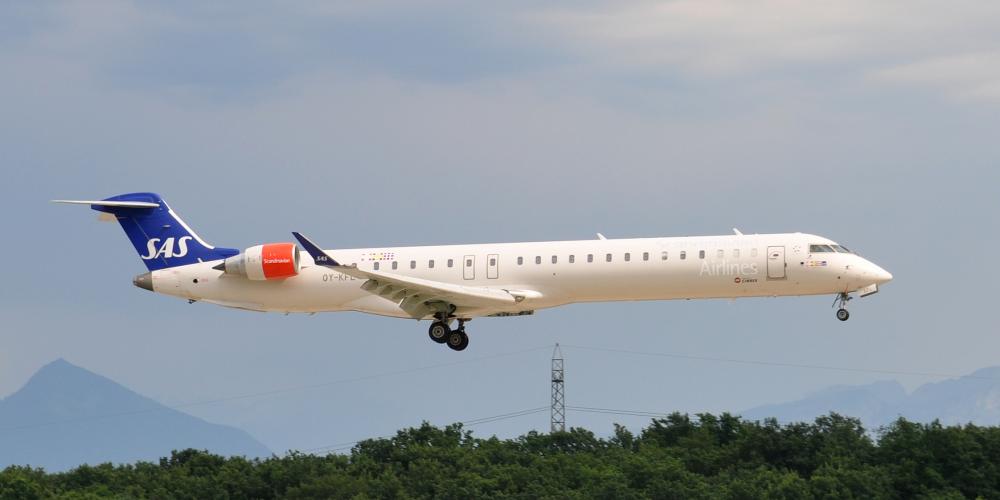
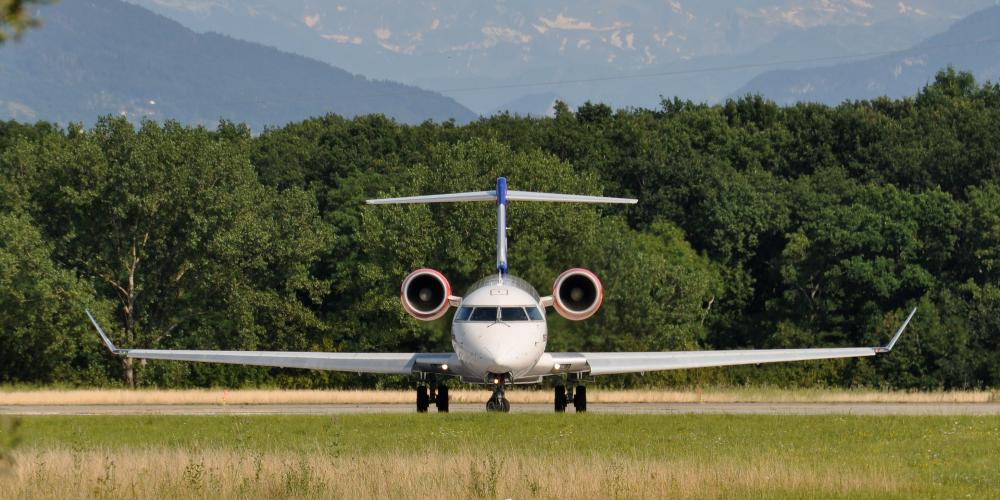
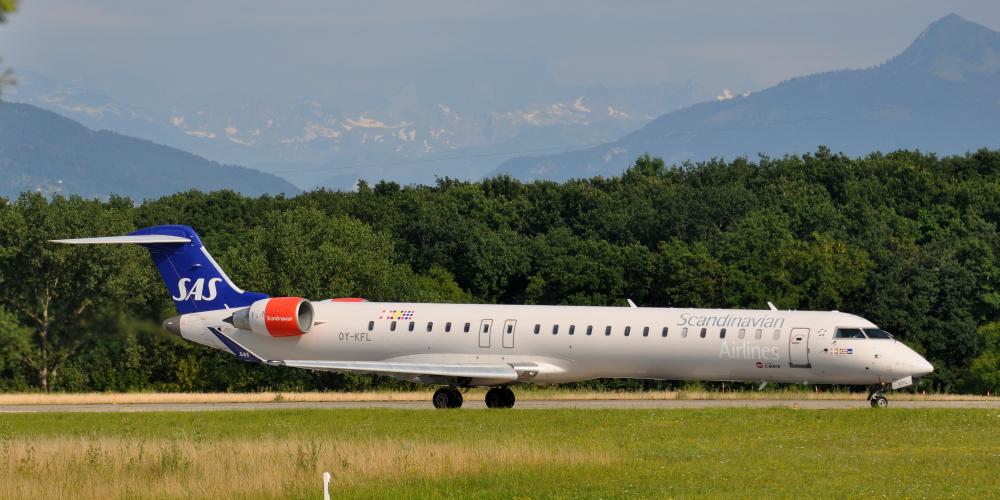
Bombardier CRJ-900 LR (CL-600-2D24), registration OY-KFL, built 2009, serial number 15246
Cointrin (GVA), Geneva, Switzerland, 30 July 2016
de Havilland Canada: Dash-8
Challenger: 300 | 350 |
600 | 601 |
604 | 605 |
650 | 850
Global: Express |
5000 | 6000
Learjet: 40 |
45 | 60 |
75
Canadair: CRJ | CRJ100 |
CRJ200 | CRJ700 |
CRJ900 |
CRJ1000
Bombardier: CSeries |
CS100 | CS300
Bombardier CRJ1000
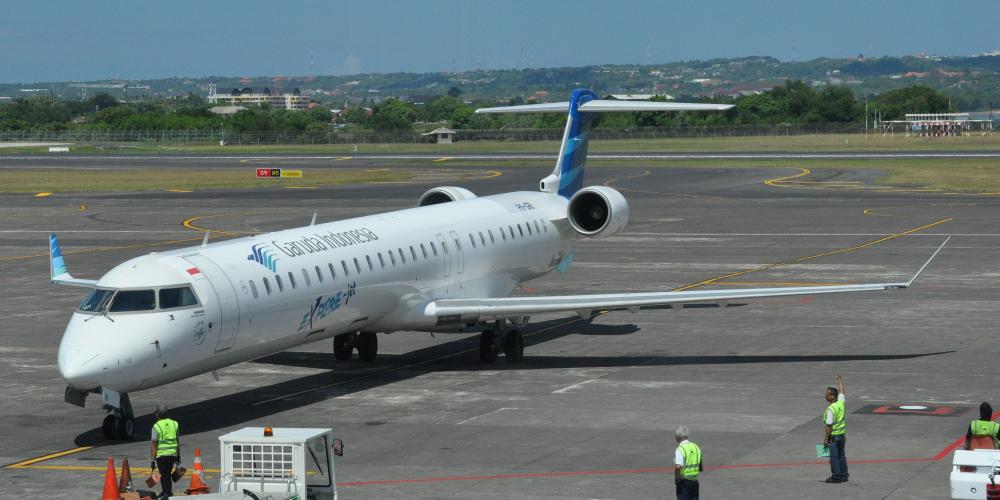
Bombardier CRJ-1000 (CL-600-2E25), registration PK-GRI, built 2013, serial number 19031
Ngurah Rai International Airport (DPS), Denpasar, Bali, Indonesia, 17 May 2016
de Havilland Canada: Dash-8
Challenger: 300 | 350 |
600 | 601 |
604 | 605 |
650 | 850
Global: Express |
5000 | 6000
Learjet: 40 |
45 | 60 |
75
Canadair: CRJ | CRJ100 |
CRJ200 | CRJ700 |
CRJ900 |
CRJ1000
Bombardier: CSeries |
CS100 | CS300
Bombardier CSeries
The Bombardier CSeries or C Series is a family of narrow-body, twin-engine, medium-range jet airliners.
In 2004 the creation of a New Commercial Aircraft Program was evaluated, followed by a feasibility study for the CSeries: to replace aging DC-9/MD-80, Fokker 100, Boeing 737 Classic and BAe-146 with 20% lower operating costs, and 15% lower than aircraft produced at the time. The smaller version should carry 110 to 115 passengers and the larger 130 to 135 passengers over 3,200 nautical miles.
On May 2005, the CSeries development was evaluated at US$2.1 billion, shared with suppliers and partner governments for one-third each.
On 31 January 2006, Bombardier announced that market conditions could not justify the launch of the program. However, on 31 January 2007, Bombardier announced that work on the aircraft would continue, with entry into service planned for 2013.
On 13 July 2008 the CSeries was formally launched.
In March 2009, Bombardier redesignated the C110 and C130 respectively CS100 and CS300. The models were offered in normal and extended range (ER) versions, additionally, an extra thrust (XT) version of the CS300 was also offered. The ER and XT versions were removed in 2012 by Bombardier, providing a standard range equal to the one previously identified as extended range.
In November 2009, the program was estimated at $3.5 billion, shared with suppliers and governments. First flight was expected in 2012. In 2010, deliveries of the CS100 were planned to start in 2013, and CS300 deliveries were to follow a year later.
US Federal Aviation Administration and European Aviation Safety Agency certification for the CS100 was granted in June 2016. The first CSeries, a CS100 (HB-JBA), was delivered to Swiss Global Air Lines on 29 June 2016 at Montréal-Mirabel International Airport.
On 16 October 2017, Airbus and Bombardier Aerospace announced a partnership on the CSeries program, with Airbus acquiring a 50.01% majority stake, Bombardier keeping 31% and Investissement Québec 19%, to expand in an estimated market of more than 6,000 new 100-150 seat aircraft over 20 years. Airbus’s supply chain expertise should save production costs but headquarters and assembly remain in Québec while U.S. customers would benefit from a second assembly line in Mobile, Alabama. This transaction was subject to regulatory approvals and was expected to be completed in 2018. Airbus did not pay for its share in the program, nor did it assume any debt. Airbus insists that the company has no plan to buy out Bombardier's stake in the C-series program and Bombardier would remain a strategic partner after 2025, however clauses allow it to buy out Quebec's share in 2023 and Bombardier's 7 years after the deal closes, though it also stipulates production is required to remain in Quebec until at least 2041.
On June 8, 2018, after regulatory approval, Airbus and Bombardier announced that Airbus will get a majority stake on July 1, 2018. The head office, leadership team and primary final assembly line will stay in Mirabel, with its workforce of 2,200. Bombardier will fund the cash shortfalls if required, up to US$610 million from the second half of 2018 to 2021. The FAL in Mobile will start deliveries in 2020 with a monthly production rate of four, rising to six for a capacity of eight while the main Mirabel FAL can go to ten.
At the 2008 launch of the program, Bombardier forecast 315 annual deliveries from 2008 to 2027 for 100-150 seat airliners, but in the first 10.5 years, the six models available (B737-700, A318/A319, CS100/CS300 and E195) averaged fewer than 80 per year. The aircraft was renamed the A220-100/300 on 10 July 2018 at Airbus' headquarters in Toulouse, ten days after control of the program was handed over to
Airbus. Airbus targets over 100 orders in 2018 and 3,000 over 20 years, half of the 100-150 seat market, and needs a supply chain cost reduction over 10%.
de Havilland Canada: Dash-8
Challenger: 300 | 350 |
600 | 601 |
604 | 605 |
650 | 850
Global: Express |
5000 | 6000
Learjet: 40 |
45 | 60 |
75
Canadair: CRJ | CRJ100 |
CRJ200 | CRJ700 |
CRJ900 |
CRJ1000
Bombardier: CSeries |
CS100 | CS300
Bombardier CS100
The 108 to 133-seat CS100 (officially BD-500-1A10) made its maiden flight on 16 September 2013, was awarded an initial type certification by Transport Canada on 18 December 2015 and entered service on 15 July 2016 with Swiss Global Air Lines (as HB-JBA).
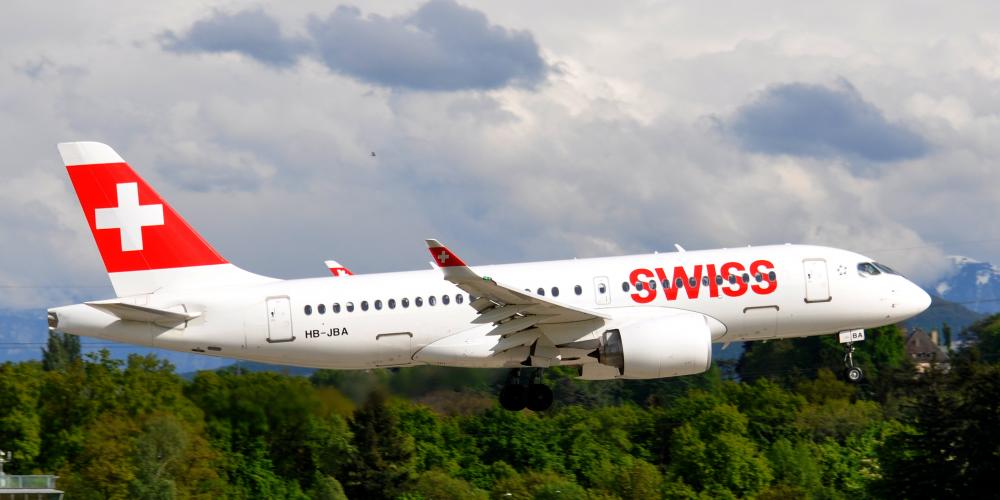
Bombardier CS100 (BD-500-1A10), registration HB-JBA, built 2015, serial number 50010
Cointrin (GVA), Geneva, Switzerland, 3 May 2017
de Havilland Canada: Dash-8
Challenger: 300 | 350 |
600 | 601 |
604 | 605 |
650 | 850
Global: Express |
5000 | 6000
Learjet: 40 |
45 | 60 |
75
Canadair: CRJ | CRJ100 |
CRJ200 | CRJ700 |
CRJ900 |
CRJ1000
Bombardier: CSeries |
CS100 | CS300
Bombardier CS300
The 130 to 160-seat CS300 (officially BD-500-1A11) first flew on 27 February 2015, received an initial type certification on 11 July 2016, and entered service with launch customer airBaltic on 14 December 2016. Service entry saw 21% lower fuel burn for the CS300 replacing B737-300s with a dependability above 99.3%, and 25% lower costs than the RJ100 for the CS100, while the passengers' and pilots' feedback is positive for the cabin and flight controls.
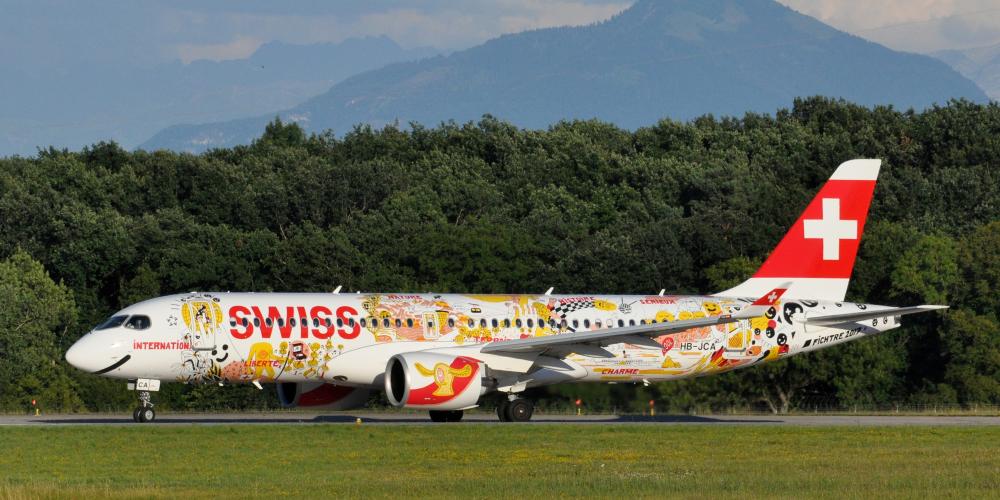
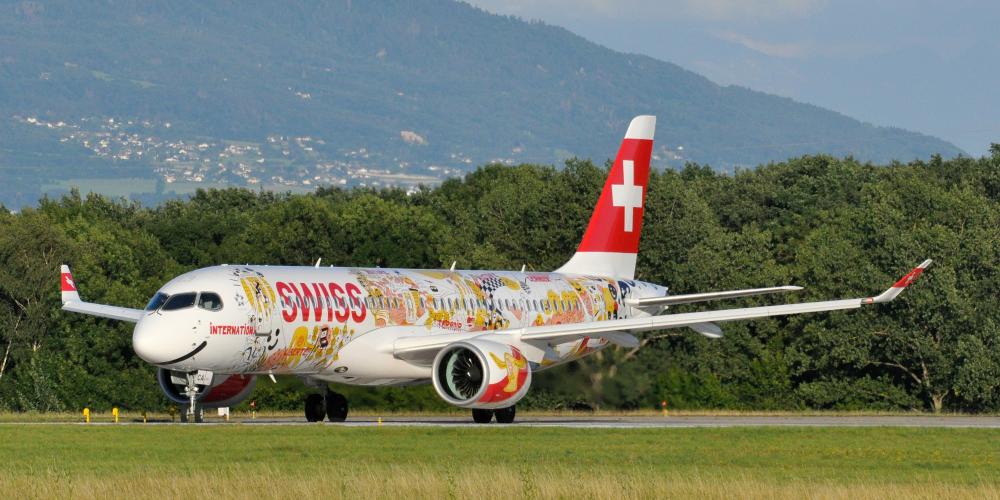
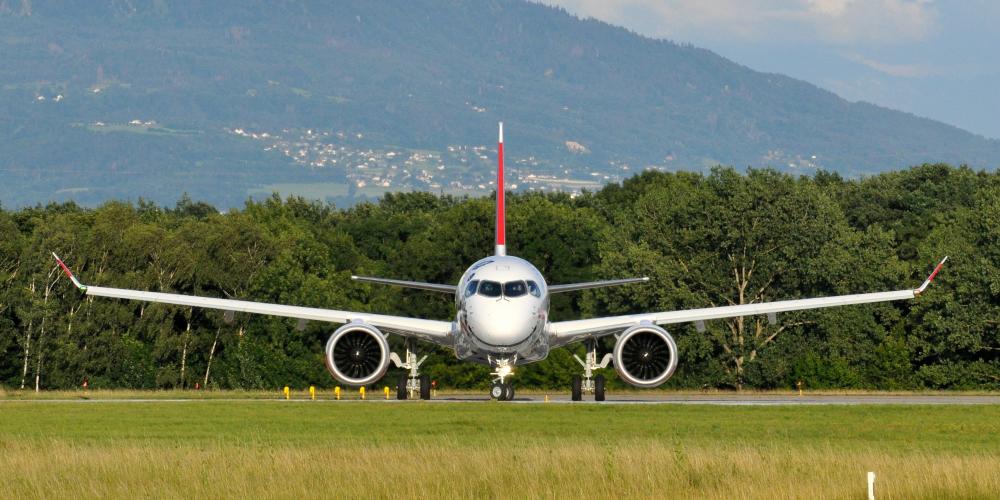
Bombardier CS300 (BD-500-1A11), registration HB-JCA, built 2017, serial number 55010
Cointrin (GVA), Geneva, Switzerland, 5 July 2017
de Havilland Canada: Dash-8
Challenger: 300 | 350 |
600 | 601 |
604 | 605 |
650 | 850
Global: Express |
5000 | 6000
Learjet: 40 |
45 | 60 |
75
Canadair: CRJ | CRJ100 |
CRJ200 | CRJ700 |
CRJ900 |
CRJ1000
Bombardier: CSeries |
CS100 | CS300





























































